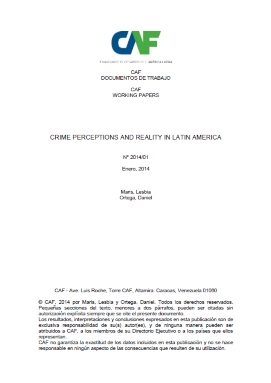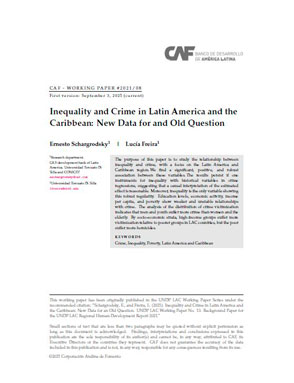Crime Perceptions and Reality in Latin America
Resumo
We show that perceptions of insecurity are strongly correlated with victimization at the individual level and suggest that the reason this relationship is usually not uncovered in simple cross country studies is that they fail to consider observable differences across individuals who may face different perceptions of insecurity as well as different probabilities of victimization. Our findings are consistent with a model where individuals rank crime relative to other problems depending on whether they have developed coping mechanisms to attenuate the impact of crime on their wellbeing, the implication is that the weight individuals' place on crime depends more on changes in actual crime than on its level. We do not claim to establish a causal relationship between victimization and perception, but we raise the bar for claims of the absence of a correlation.
Assunto
País / Región
Data
2014Cite esta publicação
Item que pertence à coleção
Items Relacionados
Crime Protection Investment Spillovers: Theory and Evidence from the City of Buenos Aires
This paper studies spillover effects among potential crime victims from investment in observable protection technologies. Criminals and potential victims ...
Towards a safer Latin America. A new perspective to prevent and control crime
This year’s Report on Economics and Development (RED) proposes an approach for the analysis of insecurity in which crime results from decisions made by ...
Inequality and Crime in Latin America and the Caribbean: New Data for and Old Question
The purpose of this paper is to study the relationship between inequality and crime, with a focus on the Latin America and Caribbean region.We find a ...





